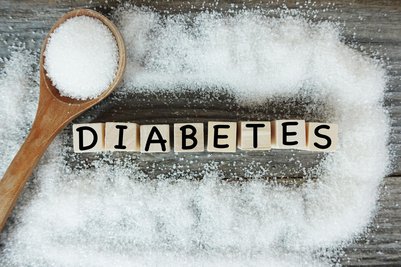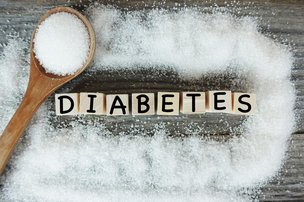
You may be aware of the most common types of diabetes, those being Type 1, Type 2 and gestational diabetes but did you know that there are also at least 6 other types?!
Read on to find out what the different types of diabetes are...
9 Types of Diabetes:
Type 1
What is it?
This type of diabetes causes the level of glucose, known as sugar, in your blood to become too high. This occurs when your body cannot produce enough of a hormone called insulin which controls blood glucose. Type 1 diabetes is not influenced by your diet or your lifestyle and can affect people of any age.
What are the symptoms?
The symptoms of type 1 diabetes often show quickly, sometimes in just a matter of days. These are the main symptoms:
- Increased thirst
- Urinating more than usual
- Feeling fatigued
- Unexplained weight-loss
How is it diagnosed?
GP's will complete a urine test and will also check your blood sugar levels. If they are under the belief that you do have diabetes, you will be advised to go to the hospital immediately where an assessment will be carried out. You will be required to stay in the hospital until your blood test results are ready, usually the same day.
Should the assessment determine that you do have type 1 diabetes, a specialist diabetes nurse will talk you through everything you need to know and what you will need to do to manage it.
How is it treated?
Type 1 diabetes can be managed by daily injections of insulin, or an insulin pump which helps to keep your blood sugar levels under control.
Type 2
What is it?
This type of diabetes is a condition which causes the level of glucose in your blood to become too high. It is caused by your body having problems with producing insulin, the hormone that controls your blood sugar levels. Type 2 diabetes can increase your risk of acquiring problems with your eyes, heart and nerves. There are links to type 2 diabetes with being overweight, inactive & your genetics.
What are the symptoms?
- Needing to urinate more often, especially at night time
- A constant thirst that cannot be quenched
- Fatigue
- Unexplained weightloss
How is it diagnosed?
It is not uncommon for type 2 diabetes to be uncovered via blood or urine tests taken by your GP for something else. If the tests come back that you do have diabetes, your GP will discuss with you what the condition is and the next steps you need to take.
How is it treated?
Type 2 diabetes is treated by medication, but you may also be advised to change your diet and to do more physical exercise. Anyone with a type 2 diabetes diagnosis is required to attend regular check-ups at their local GP.
Gestational Diabetes
What is it?
This type of diabetes develops during pregnancy and normally disappears post giving birth. It is caused by high blood sugar and can occur at any stage of pregnancy. The reason it occurs is that the individual's body isn't able to produce enough of the hormone insulin to meet their additional needs during pregnancy.
What are the symptoms?
Often, there will not be any symptoms of gestational diabetes, or they may be similar to pregnancy side-effects which can make it difficult to detect. However, if a pregnant individuals blood sugar levels rise too high they may experience the following symptoms:
- Increased thirst
- Urinating more often than usual
- A dry mouth
- Fatigue
How is it diagnosed?
Certain factors contribute towards a persons' risk of gestational diabetes; having a Body Mass Index over 30, if they have had a baby before who has weighed 10lb or more at birth, have had gestational diabetes before or have a family history of the condition.
The risk of gestational diabetes will be determined during the first antenatal appointment 8 to 12 weeks into a pregnancy. Women who have any of the risk factors of gestational diabetes will be offered a screening test which will determine whether or not they have the condition.
How is it treated?
Controlling blood sugar levels can help to decrease the chances of there being any problems during and after pregnancy. Anyone with the condition will be provided with a blood sugar testing kit so that they can monitor the effects of the treatment. Simple things such as making diet adjustments or exercising can help to reduce blood sugar levels. If this is not effective, medication will also be provided which could be in tablet form or insulin injection.
Maturity Onset Diabetes of the Young (MODY)
What is it?
MODY is a rare form of diabetes which is more often than not, genetic. It occurs due to a mutation in a single gene so if a parent has the gene, their offspring have a 50% chance of inheriting the condition. This type of diabetes is not affected by a persons' weight or lifestyle, and will usually develop before the person is 25 years old. People with MODY experience problems with regulating their blood sugar levels.
What are the symptoms?
- Frequent urination
- Increased level of thrist
- Unexplained weight loss
How is it diagnosed?
A GP can complete a blood test to examine blood sugar levels, or a genetic test can be carried out which will determine the exact type of MODY.
How is it treated?
MODY is usually treated by medication, and eventually insulin injections. Treatment will be more effective for those who are a healthy weight.
Neonatal Diabetes
What is it?
Neonatal diabetes is a very rare type of diabetes that can occur in babies under the age of 9 months. It is caused by a change in a gene which affects an infants insulin production leading to their levels of blood sugar to rise dramatically. There are two types of neonatal diabetes, transient and permanent. Transient neonatal diabetes can resolve and then reoccur in later life, whilst permanent neonatal diabetes never goes away.
What are the symptoms?
- Excessive thirst
- Urinating more than usual
- Dehydration
How is it diagnosed?
Neonatal diabetes is often diagnosed via genetic testing.
How is it treated?
Half the time, insulin is not needed to treat neonatal diabetes and instead can be treated with a tablet which is called Glibenclamide.
Wolfram Syndrome
What is it?
Wolfram Syndrome is a rare genetic disorder which is known to some as DIDMOAD syndrome as its 4 most common features are diabetes insipidus, diabetes mellitus, optic atrophy and deafness.
- Diabetes insipidus occurs in 50% of people with Wolfram syndrome and is where the body cannot concentrate urine due to the posterior pituitary gland not making enough of the hormone vasopressin. This causes a person to get very thirsty, and urinate frequently.
- Diabetes mellitus is similar to type 1 diabetes other than the fact it is not an autoimmune condition. It is treated the same way as type 1 diabetes with insulin injections, a healthy diet, exercise and blood tests.
- Optic atrophy is when the optic nerve has wasted away leading to colour blindness and a gradual loss of vision. Most people with Wolfram syndrome will have this condition at some point in their lives.
- Deafness due to Wolfram syndrome leads to 1 in 4 affected needing a hearing aid. They may struggle to hear high pitched sounds.
How is it diagnosed?
A GP will give a diagnosis of Wolfram syndrome if a child has both optic atrophy and diabetes mellitus.
How is it treated?
Currently, no cure has been found for Wolfram syndrome, but treatments can be provided for some of the symptoms experienced. For instance, hearing aids can be provided to help with deafness.
Alstrom Syndrome
What is it?
Alstrom syndrome is a rare repressively inherited genetic disorder. This means that both parents will carry the gene, but are unlikely to be affected themselves.
What are the symptoms?
Most of the symptoms of Alstrom syndrome display in infants & young children but it is possible for symptoms to show later in life. The main symptoms are as follows:
- Obesity and insulin resistance
- Nystagmus which causes wobbly eyes
- Type 2 diabetes mellitus
- Retinal degeneration which is a progressive eye disease
- Sensorineural hearing loss
- Photophobia which is a sensitivity to light
How is it diagnosed?
Alstrom syndrome can be diagnosed via genetic testing.
How is it treated?
Currently, there isn't a cure for Alstrom syndrome but many of the symptoms can be managed in various ways. For example, hearing aids can assist with hearing loss, and light sensitivity can be helped by dark glasses. Some of the symptoms can also be treated by medications.
Those who experience type 2 diabetes will be recommended to follow a healthy diet and to follow an exercise routine. Doing this will also reduce the risk of obesity, another common symptom of Alstrom syndrome.
Latent Autoimmune Diabetes in Adults ( LADA)
What is it?
Some people refer to LADA as 'type 1.5' diabetes as some aspects of the condition are more like type 1 diabetes, and some more like type 2 diabetes. Medical research is currently being conducted to work out what it is that makes LADA different from type 1 & type 2 diabetes. LADA tends to be diagnosed in people who are between ages 30 and 50 years.
What are the symptoms?
- Fatigue
- Unexplained weight-loss
- Increased thirst
- Needing to urinate often
How is it diagnosed?
People who have LADA normally have antibodies in their blood which are often found in people who have type 1 diabetes. This is assessed by a GADA antibody test.
How is it treated?
LADA is usually treated by medication to begin with, and then insulin when a persons' blood sugar levels begin to rise.
Type 3c Diabetes
What is it?
Type 3c diabetes occurs when there has been damage to someone's pancreas due to an illness or condition. Common conditions/illnesses that affect the pancreas are pancreatic cancer, cystic fibrosis and pancreatitis. It is also possible for someone to get type 3c diabetes if their pancreas has been removed for whatever reason. Type 3c diabetes happens when the pancreas isn't able to produce an adequate amount of insulin for the body. Further to this, it causes the pancreas to discontinue producing the enzyme required to digest food.
What are the symptoms?
- Stomach pain
- Increased fatigue
- Unexplained weight-loss
- Passing wind regularly
How is it diagnosed?
This type of diabetes is not very well known and consequently can be mistaken for being type 2 diabetes. If a person has issues with their pancreas, you can ask your GP to check for type 3c diabetes.
How is it treated?
Type 3c diabetes is often treated with either the medication metformin or insulin depending on the level of damage a persons' pancreas has endured. Metformin assists the insulin you do produce to work more effectively, reducing your blood sugar levels. If a person is losing weight, GP's will then prescribe insulin.
If you suspect that you may have diabetes, it is advised that you contact your local GP and book an appointment as soon as possible.
Would you like assistance with finding care services near you? Please get in touch with TrustedCare today.
Call us on 01865 638018
Send message

